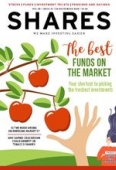Archived article
Please note that tax, investment, pension and ISA rules can change and the information and any views contained in this article may now be inaccurate.
Is it ever worth paying higher fees for investment trusts?

The advent of robo-advice and DIY investment websites has led to an increased focus on the cost of investing.
Fund supermarkets have helped boost transparency around just how much investors are being charged to access funds and trusts. That, along with the rise of tracker funds, has put pressure on many companies to lower their fees.
INVESTING IS GETTING CHEAPER
As a result, investors can now access tracker funds for as little as 6 basis points – the equivalent of 60p for every £1,000 invested. But not all investments have responded to this pressure; while the typical fund now has annual charges of around 0.75%, there are plenty charging considerably more.
Figures compiled by the Association of Investment Companies for Shares show at least 10 investment trusts have an ongoing charges figure (OCF) of more than 2.1%. The question is: is it ever worth paying more?
Ian Sayers, chief executive of the AIC, says: ‘Investment companies which invest in specialist areas tend to have higher costs.’ He points to trusts in the private equity sector as being among those which often tend to be more expensive.
These trusts may have greater costs in the deals they negotiate and research they carry out on unlisted companies and tend to play a closer role in managing those businesses too, sometimes even appointing a person to the company’s board.
Property is another area where costs can rack up. Refurbishing and redeveloping sites can be costly, as can managing a building, while void periods can mean no income for months at a time. That’s not to mention the legal costs, stamp duty and various other fees involved in buying and selling property.
Ben Yearsley, director at Shore Financial Planning, says: ‘I don’t have a problem with high fees per se; if a manager consistently outperforms every year after fees then it matters less what you are paying them, but the fact is that very few do.
NO EXCUSE
‘There are some investments that are more expensive because they are more labour intensive or can’t scale up to help lower the fees, such as VCTs, but mainstream investments don’t really have any excuse to justify abnormally high charges.’
Top of the most-expensive trusts list is the Global Resources (GRIT) trust, which specialises in the natural resources sector, backing emerging development companies including a number of unquoted investments. It has an OCF of 5.6%.
Investment director David Hutchins says: ‘Investing in unquoted assets is always going to cost more – it requires more effort and you need to take advice and make sure you’re protected. It’s a high risk, high reward strategy and I think investors recognise they have to pay higher charges for exposure to these assets.’
But the past few years have been a notoriously torrid time for natural resources investments and those enduring the higher costs of this trust have not been rewarded; it is down an eye-watering 31.9% over the past year alone. Hutchins adds that size is another important factor: ‘We only have around £7m of assets, if that doubled costs would probably half.’
But other high-fee trusts have performed better, such as UIL (UTF), which looks for out of favour stocks across the globe. It has returned 15.5% over the past year and 86.2% over three years, compared with a sector average of 3.7% and 32.8% respectively.
COSTS AND BENEFITS
Also among the most expensive trusts is Regional REIT (RGT), which buys properties in need of improvement, redevelops them and then lets them to tenants. The trust has an OCF of 4.6%.
Director Stephen Inglis says this is because its vacancy rate is typically higher than competitors because of the refurbishment work the company carries out to improve its lots.
He says: ‘We have to include property management fees, empty property costs, insurance and service charges and business rates. We’re toward the higher end of costs compared to competitors because we do things differently.’
He points out that doing everything in-house, including admin and building maintenance, also adds to costs. However, he believes the high charge is justified because the trust produces a chunky dividend yield – currently 8%.
Overall returns have been largely in line with its peers, up 4% over the past year compared with a sector average of 4.1%.
Undoubtedly an investment with higher fees sets itself a difficult task; it must outperform that charge simply for investors to break even, and that can be difficult in illiquid or cyclical areas such as property, private equity or natural resources.
PROMPT FOR FURTHER RESEARCH
A higher charge may not need to be an immediate red flag but it should prompt investors to do a little more research to check that it is going to be worth the price, otherwise investors may be better off in a tracker fund charging six basis points.
Yearsley says: ‘If the investment you have chosen has high fees, look back at the performance to see if it has consistently beaten a relevant benchmark. If it hasn’t, it’s probably not worth paying the price.’ (HB)
Important information:
These articles are provided by Shares magazine which is published by AJ Bell Media, a part of AJ Bell. Shares is not written by AJ Bell.
Shares is provided for your general information and use and is not a personal recommendation to invest. It is not intended to be relied upon by you in making or not making any investment decisions. The investments referred to in these articles will not be suitable for all investors. If in doubt please seek appropriate independent financial advice.
Investors acting on the information in these articles do so at their own risk and AJ Bell Media and its staff do not accept liability for losses suffered by investors as a result of their investment decisions.

 magazine
magazine










